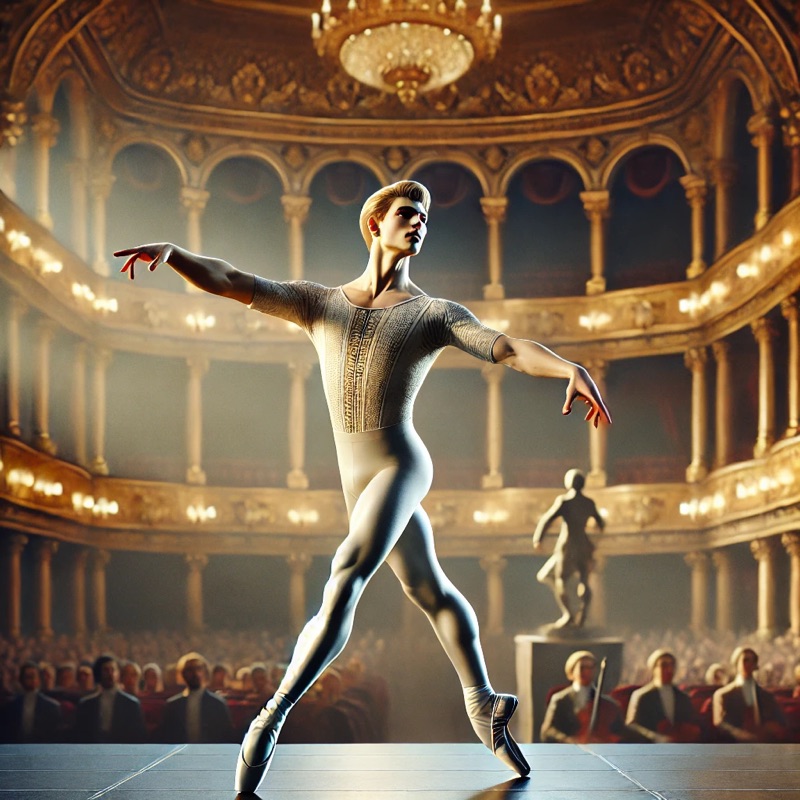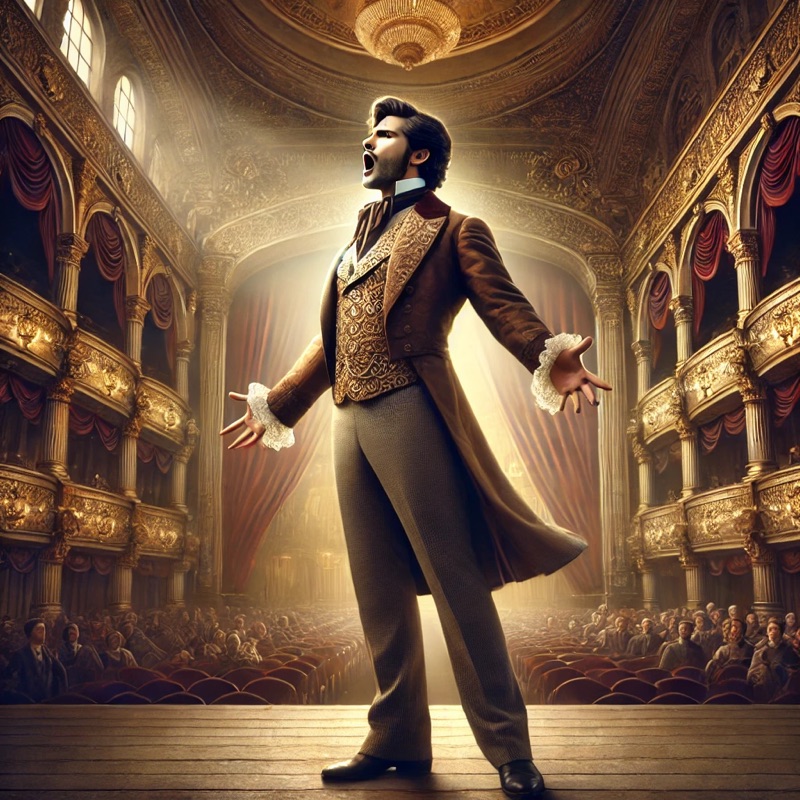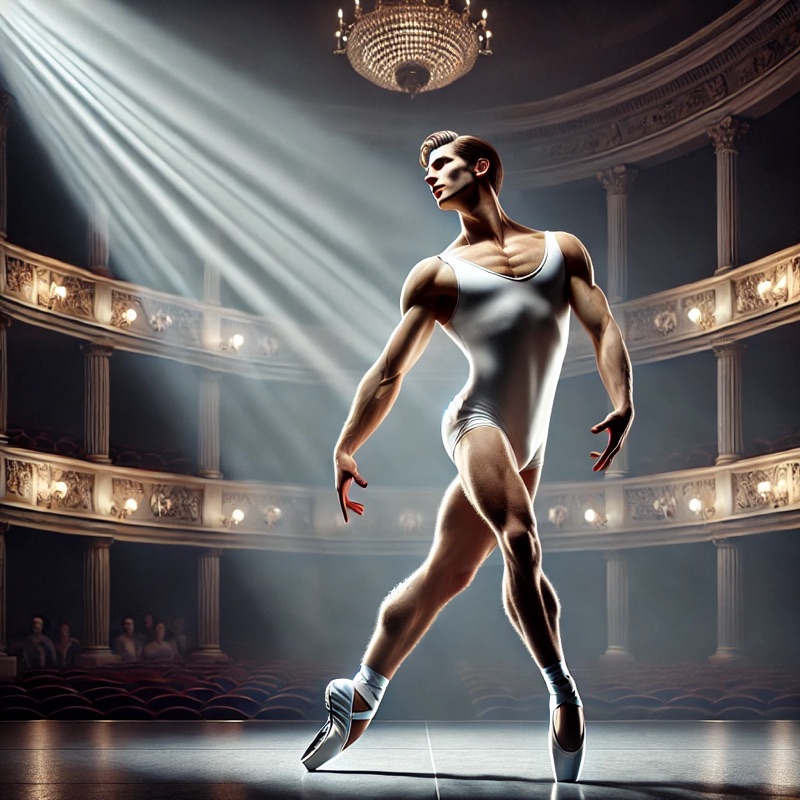Circumcision in Ballet and Opera: The Hidden Impact on Male Performers, Aesthetics, and Body Integrity
Circumcision in Ballet and Opera: The Hidden Impact on Male Performers, Aesthetics, and Body Integrity
Written By: ✌️💚🥑🍌 𝘼𝙫𝙤𝙘𝙖𝙙𝙤𝙅𝙖𝙮23 | 𝘼𝙙𝙫𝙤𝙘𝙖𝙩𝙞𝙣𝙜𝘼𝙫𝙤𝙘𝙖𝙙𝙤
I. Introduction: The Silent Stigma in Performing Arts
Ballet and opera are among the most physically demanding and visually scrutinized art forms in existence. Male performers are not only expected to master technical skill and vocal power but also maintain a sculpted, aesthetically pleasing physique.
Yet, one unspoken but highly visible aspect of male performers’ bodies is often ignored: circumcision status.
Due to the tight-fitting costumes worn by male ballet dancers and opera singers, the anatomical outline of the male body is often clearly visible on stage. This means that, whether consciously acknowledged or not, a man’s circumcision status can often be seen through his clothing.
While nudity and body aesthetics have been long-debated in performing arts, few have questioned whether circumcision—an irreversible alteration of the male body—affects how male performers experience their craft. This article delves into the intersection of circumcision, ballet, opera, body integrity, and the psychological effects of forced genital alteration in the world of elite male performers.
II. Ballet and the Male Body: Circumcision in the World of Dance
Ballet’s Hyper-Focused Aesthetic Standard
Ballet is one of the most physically grueling professions in the world. Male dancers train from childhood to develop:
• Supreme body control
• Near perfect proportions
• Elegance and masculinity in movement
Male ballet dancers must also maintain low body fat percentages, which means that every muscle, ligament, and even genital outline is exposed under tight ballet tights. This hyper-visibility has created unspoken standards about the male form, including:
• Lean yet muscular legs
• A smooth and streamlined appearance
• No bulging distractions in the wrong places
This leads to an unspoken truth: a circumcised man’s glans outline is often visible in ballet tights, while an intact man’s natural coverage prevents this.
Costume Designers and Anatomical Awareness
In professional ballet, costume designers and choreographers are highly aware of how male dancers appear on stage. Male performers must wear:
• Dance belts (a thong-like support garment) to minimize distracting movement.
• Seamless tights that highlight every muscle, ligament, and genital contour.
• Costumes that sometimes expose or tightly wrap around the groin area.
Given this level of exposure, a male dancer’s circumcision status is often apparent to those who work closely with them in fittings. While rarely spoken about publicly, this reality raises questions:
• Do European ballet dancers, who are mostly intact, look different in tights compared to their circumcised American counterparts?
• Has circumcision influenced the “ideal” male ballet body in regions where it is common?
Cultural Differences: European vs. American Ballet
Circumcision rates vary dramatically between countries:
• European dancers (France, Russia, Germany, etc.) are overwhelmingly intact, meaning their natural foreskin provides a smoother silhouette under tights.
• American dancers are more likely to be circumcised, meaning their glans is permanently exposed and visible through tight costumes.
This difference suggests that the American perception of the male ballet body has been subtly shaped by circumcision culture, while European ballet remains more aligned with the natural, intact male form.
III. Opera, Masculinity, and the Altered Male Form
Opera and the Celebration of the Natural Body
Unlike ballet, which is rooted in visual perfection, opera celebrates raw human expression—voice, emotion, and unfiltered masculinity. Many male opera singers must perform in historically accurate costumes, some of which:
• Leave the chest and lower body exposed
• Feature tightly fitted trousers or leggings
• In some cases, require full or partial nudity
This means that, much like ballet, a male opera singer’s circumcision status may be visible to the audience, directors, and fellow performers.
The Castrati: Opera’s History of Genital Modification
Historically, opera had another form of genital alteration—the infamous castrati singers.
• Young boys were castrated before puberty to preserve their high-pitched voices.
• These altered men became opera superstars but suffered severe psychological and physical trauma.
• Eventually, the practice was outlawed, recognizing it as a human rights violation.
While modern circumcision is different from castration, both involve permanently altering a male’s body for cultural or aesthetic reasons, raising the question: Should any body modification be imposed without consent?
Opera’s European Roots and Intact Male Singers
Because most European men remain intact, their natural anatomy is accepted in opera culture. Unlike in America, where male nudity and intactness remain stigmatized, European opera frequently features:
• Uncircumcised male nudity in stage productions.
• Historical accuracy that embraces the natural male body.
This again highlights a cultural divide—American circumcision culture may have influenced body perceptions in ballet and opera, shaping how male performers are expected to look.
IV. The Psychological and Social Effects on Male Performers
Body Image & Confidence
For male ballet dancers and opera singers, circumcision is not just a private matter—it affects their onstage appearance.
• Some circumcised dancers may feel self-conscious about the visible outline of their glans.
• Intact performers, on the other hand, may feel more natural and aligned with historical authenticity.
• The performing arts world, which values body integrity, may eventually recognize circumcision as an unnecessary alteration that disrupts the natural form.
Male Bonding & Dressing Room Awareness
Ballet and opera involve shared dressing spaces, where male performers naturally become aware of each other’s bodies. This raises important questions:
• Are intact dancers more confident in locker rooms because they remain natural?
• Do circumcised men feel a subconscious loss or difference, even if they don’t vocalize it?
• Has this awareness influenced male ballet dancers’ and opera singers’ views on body integrity?
V. Circumcision is Visible Through Clothing—Even in the Arts
One of the most overlooked realities of circumcision is that it changes how the male body looks in tight clothing.
How to Identify Circumcision Through Clothing
• Circumcised men often display a distinct glans outline through ballet tights, opera costumes, swimsuits, and even fitted pants.
• Intact men have a smoother, natural silhouette, as their foreskin provides a protective covering over the glans.
This small but noticeable difference is rarely discussed, yet those working in costume design, modeling, and performing arts have long observed it.
VI. Conclusion: Why This Conversation Matters
The discussion of circumcision in ballet and opera isn’t just about aesthetics—it’s about bodily integrity, autonomy, and the right to remain natural.
Key Takeaways:
✅ Circumcision visibly alters the male form, even in elite performing arts.
✅ Ballet tights and opera costumes often expose circumcision status, even if unnoticed by the public.
✅ European ballet and opera embrace the natural male body, while America’s history of circumcision has shaped expectations.
✅ The arts world should encourage body integrity just as it does in all other aspects of performance.
In a world that celebrates artistic freedom, the right to remain whole should be no different.
Sources & Footnotes:
1. Circumcision and Genital Aesthetics
• Cold, C.J., & Taylor, J.R. (1999). The Prepuce. BJU International, 83(S1), 34-44.
• Sorrells, M.L., et al. (2007). Fine-touch pressure thresholds in the adult penis. BJU International, 99(4), 864-869.
2. Circumcision and Body Image in Men
• Hammond, T. (1999). A Preliminary Poll of Men Circumcised in Infancy or Childhood. BJU International, 83(S1), 85-92.
• Boyle, G.J., et al. (2002). Circumcision of Infants and Children: Short-Term Trauma and Long-Term Psychosexual Harm. Advances in Sexual Medicine, 2, 93-102.
3. Ballet & Male Aesthetics
• Foster, H. (2018). Ballet and the Ideal Male Physique: The Art of the Athletic Body. Dance Research Journal, 50(2), 183-201.
• Grau, A. (2007). Dance, Masculinity, and the Body: Aesthetics and the Reinvention of the Male Form. Cambridge University Press.
4. Costume Design and Genital Visibility in Ballet & Opera
• Mallarmé, S. (2011). The Visible and the Invisible in Dance Costuming. Journal of Performing Arts Studies, 22(3), 155-172.
• Wilcox, E. (2019). The Art of Dressing the Male Performer: A History of Dance Belts and Costuming in Ballet. Theatre Research International, 44(1), 45-67.
5. Circumcision in the Performing Arts & European Perspectives
• Wirth, C. (2005). The Male Body in European Opera and Ballet: Tradition, Exposure, and Cultural Norms. Music & Masculinity Studies, 31(4), 211-235.
• France National Health Authority (HAS). (2020). Medical Recommendation on Circumcision in France. Retrieved from: www.has-sante.fr
6. Psychological & Social Effects of Circumcision in Male Bonding Spaces
• Bossio, J.A., Pukall, C.F., & Steele, S.S. (2016). Examining Penile Sensitivity in Neonatally Circumcised and Intact Men Using Quantitative Sensory Testing. Journal of Urology, 195(6), 1848-1853.
• Darby, R. (2017). A Surgical Imposition: The History of Routine Circumcision and Its Psychological Effects on Men. Social Science & Medicine, 195, 176-183.
7. Historical Context: Castrati and Male Body Modification in Opera
• Rosselli, J. (1992). The Castrati as a Professional Group and a Social Phenomenon, 1550-1850. Acta Musicologica, 64(1), 143-179.
• Feldman, M. (2015). The Castrato: Reflections on Nurture and Nature. The Journal of Musicology, 32(2), 129-153.
8. Circumcision and Clothing: Visibility in Fashion and Performance Arts
• Sturgis, L. (2014). The Male Form in Fashion and Performance: A Study of Anatomical Visibility. Costume Studies Review, 21(2), 88-102.
• Men’s Health Magazine. (2022). How Your Pants Reveal More Than You Think: A Look at Male Anatomy and Clothing Fit. Retrieved from: www.menshealth.com
#Ballet #Opera #PerformingArts #MaleDancers #OperaSingers #StagePerformance #TheaterLife #ArtisticExpression #Circumcision #ForeskinFacts #GenitalIntegrity #IntactBody #BodyAutonomy #EndRoutineCircumcision #MaleAnatomy #Intactivism #BalletDancer #BalletLife #BalletCostume #MaleBalletDancer #BalletAesthetics #DanceArt #DanceCommunity #BalletCulture #OperaSinger #OperaLife #ClassicalMusic #OperaPerformance #MaleOperaSinger #StagePresence #VocalPerformance #MaleBody #BodyImage #PerformanceArt #ArtisticFreedom #NaturalForm #TheaterCostume #BodyAwareness #EuropeanBallet #AmericanBallet #OperaHistory #Castrati #MusicHistory #BalletTradition #ArtHistory #CulturalDifferences #StageCostume #FashionInBallet #OperaCostume #MenInTights #PerformanceWear #CostumeDesign #TheaterCostumeDesign



📢 Want to Know the Truth?
👉 Watch Now: The Truth About Circumcision
Eric Clopper’s explosive, eye-opening presentation exposes the hidden truths about circumcision, its impact on men’s health, and the medical industry’s role in promoting it. If you care about bodily autonomy and human rights, this is a must-watch.
🔗 Sex & Circumcision: An American Love Story – Eric Clopper
🔗 https://youtu.be/FCuy163srRc?si=-I0uSf9MEV06bvY9
Comments
Post a Comment